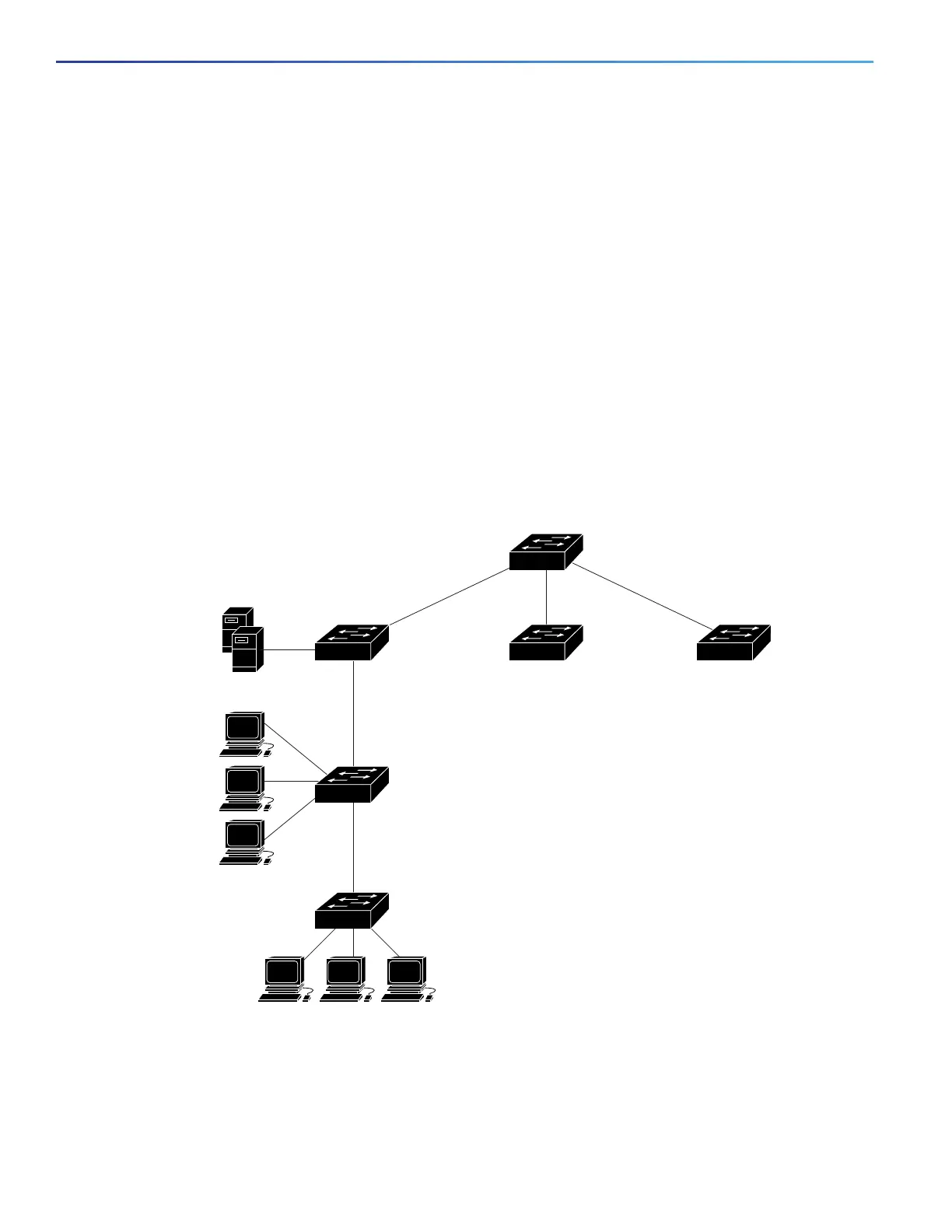106
Performing Switch Administration
Information About Performing Switch Administration
NTP avoids synchronizing to a device whose time might not be accurate by never synchronizing to a device that is not
synchronized. NTP also compares the time reported by several devices and does not synchronize to a device whose time
is significantly different than the others, even if its stratum is lower.
The communications between devices running NTP (known as associations) are usually statically configured; each device
is given the IP address of all devices with which it should form associations. Accurate timekeeping is possible by
exchanging NTP messages between each pair of devices with an association. However, in a LAN environment, NTP can
be configured to use IP broadcast messages instead. This alternative reduces configuration complexity because each
device can simply be configured to send or receive broadcast messages. However, in that case, information flow is
one-way only.
The time kept on a device is a critical resource; you should use the security features of NTP to avoid the accidental or
malicious setting of an incorrect time. Two mechanisms are available: an access list-based restriction scheme and an
encrypted authentication mechanism.
Cisco’s implementation of NTP does not support stratum 1 service; it is not possible to connect to a radio or atomic clock.
We recommend that the time service for your network be derived from the public NTP servers available on the IP Internet.
Figure 14 on page 106 shows a typical network example using NTP. Switch A is the NTP master, with Switches B, C, and
D configured in NTP server mode, in server association with Switch A. Switch E is configured as an NTP peer to the
upstream and downstream switches, Switch B and Switch F.
Figure 14 Typical NTP Network Configuration
If the network is isolated from the Internet, Cisco’s implementation of NTP allows a device to act as if it is synchronized
through NTP, when in fact it has learned the time by using other means. Other devices then synchronize to that device
through NTP.
Switch F
Switch A
Workstations
Workstations
Local
workgroup
servers
101349
Switch B
Switch E
Switch C Switch D
